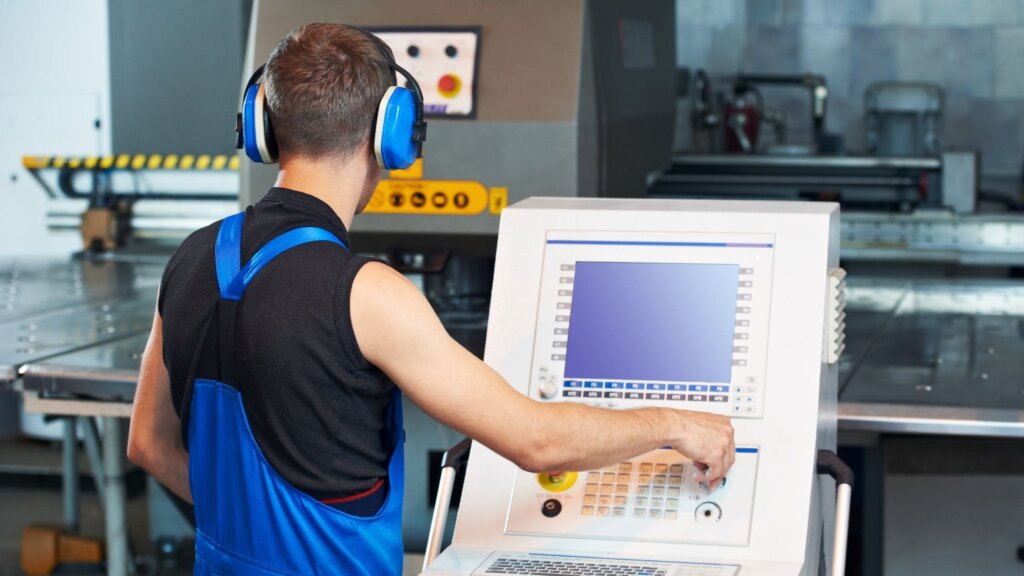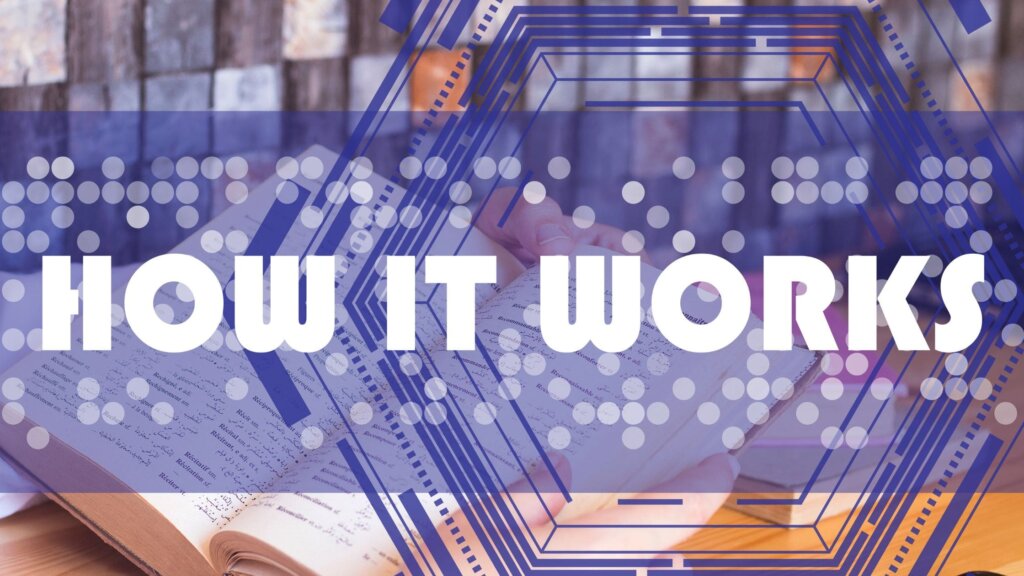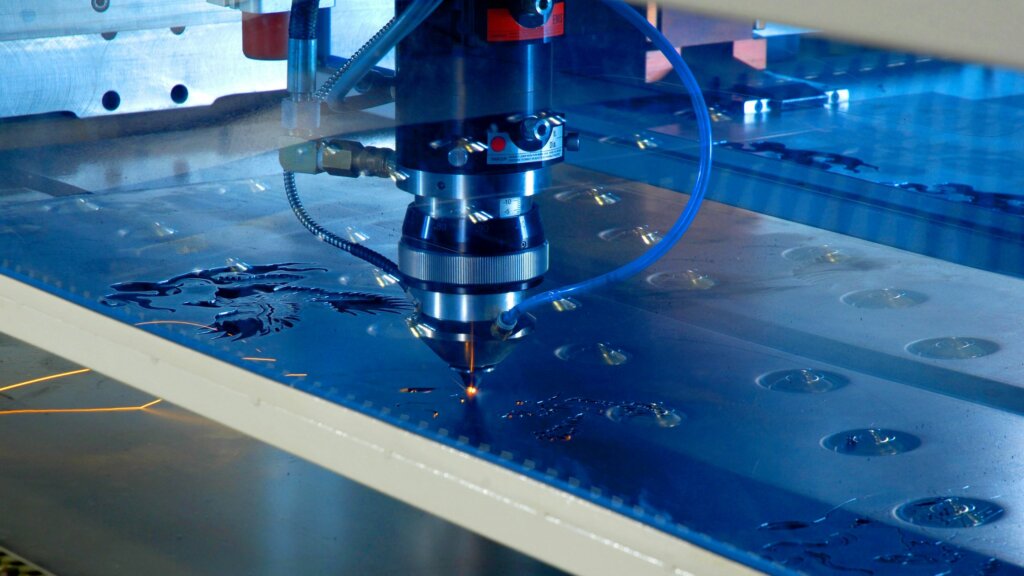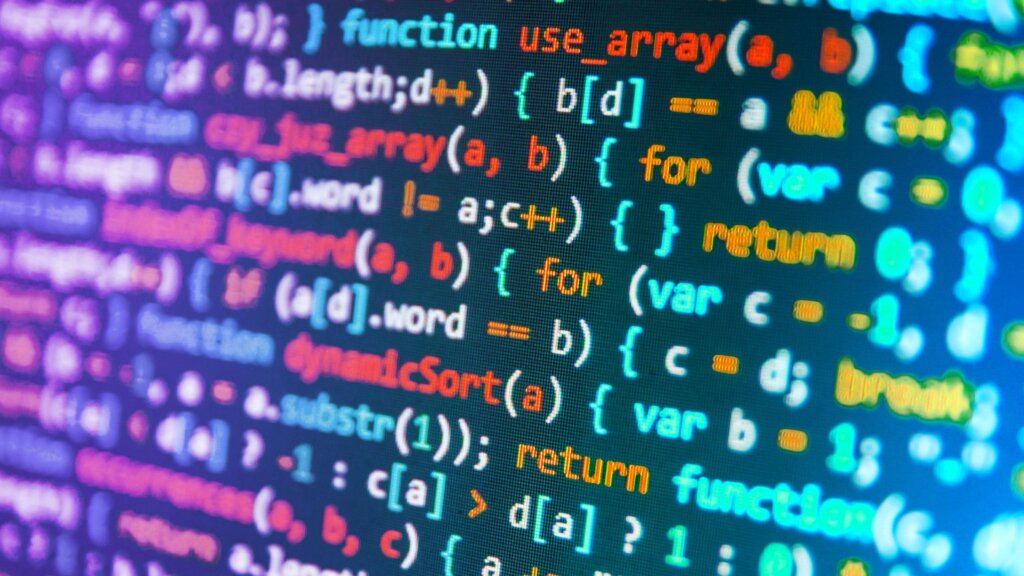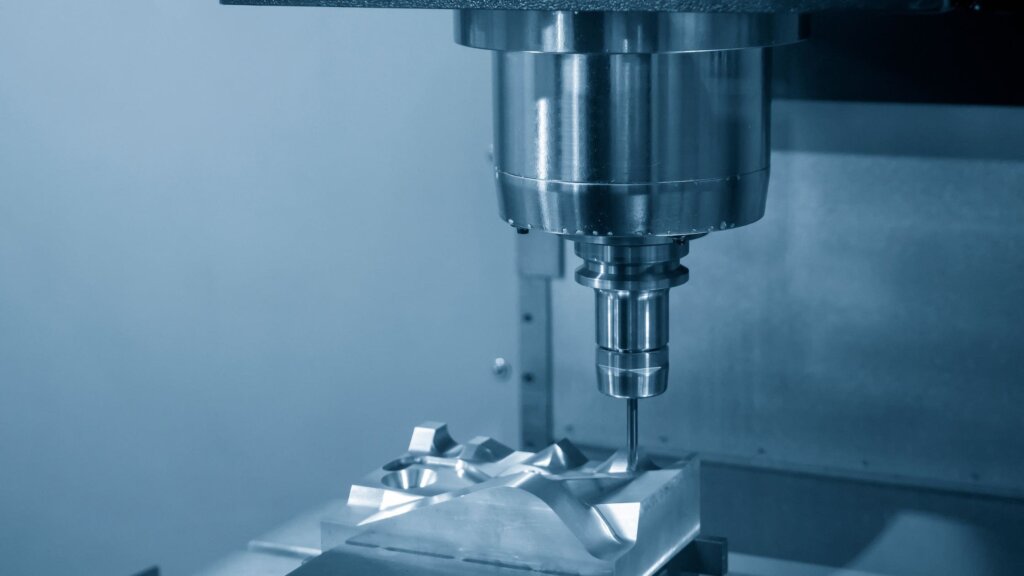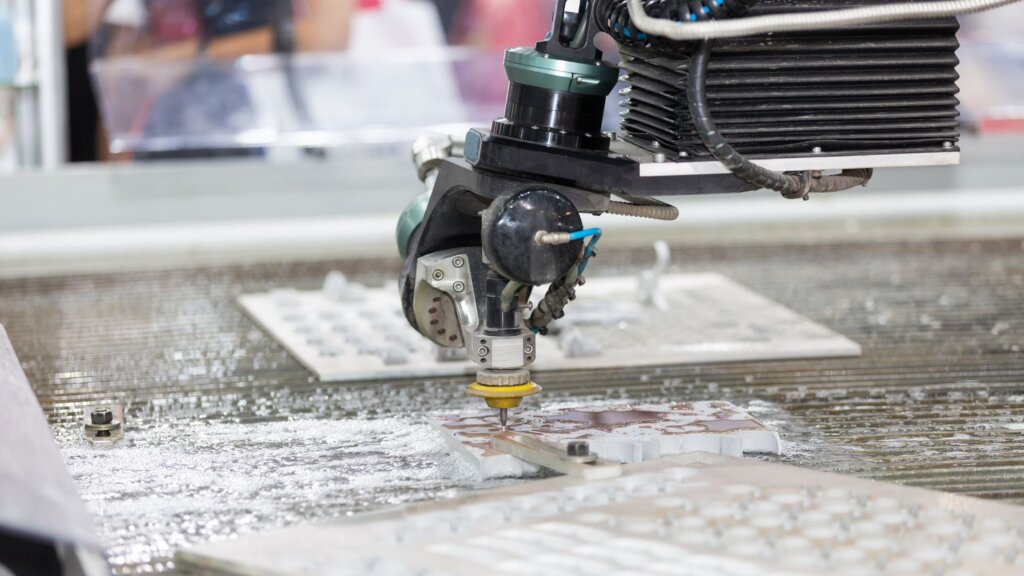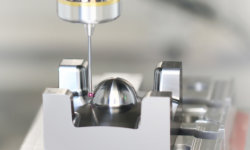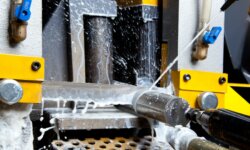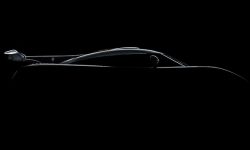Computer Numerical Control (CNC) has been one of the top innovations of the last few centuries. It has completely changed how manufacturing processes work. The level of automation it brings has provided a gateway to focus on skill-based labor instead of physical labor.
If you wonder ‘what is computer numerical control’ and how it works, this article is the perfect place for you. There will be information on every aspect of CNC, like its applications, advantages, and limits. Without waiting any further, let us dive into the topic right away:
What is Computer Numerical Control (CNC)?
Computer Numerical Control (CNC) is an automatic technology that uses a computer program to control mechanical tools. A single tool can perform multiple functions with a custom computer program. Changes and modifications in the outcome are possible with changes in the program without modifying the equipment.
‘Numerical’ in the CNC denotes the ability of this technology to use numbers for maneuvering the tools. Numbers may refer to cartesian coordinates, speeds, degrees, or many other denominations. Machine tools interpret these numbers based on the commands in the program.
CNC has diversified production processes in all industries. This technology applies to all types of industrial processes, be it machining, welding, cleaning, grinding, or 3D printing.
Origin and History of CNC
Numerical Control technology originated in the 1940s. The history of Computer Numerical Control predates the history of computers as we know them. Early numerical control systems used the punched tape method as the logic command.
The punched tape mechanism was operated with mechanical contraptions called Cams. The cams are the very same thing that works a music box. While cams provided automation to tools, they could not provide the customization of a computer program. The evolution of numerical control occurred as computing concepts were perfect in the later decades.
Who Invented CNC Technology?
John Parsons and Frank Stulen are considered the inventors of computer numerical control. They developed a CNC method for optimizing the helicopter manufacturing process of Sikorsky.
How Does CNC Technology Work?
CAD stands for Computer-Aided Design. Every part made with CNC has a unique CAD program. Computer Numerical Control uses CAD software to create the program for the required process. Minor changes, such as changing the dimensions of a part, can be done by editing values in the program.
The program is then processed into CNC machine-understandable language. The resulting files are called Computer Aided Manufacturing (CAM) models. CAD models contain instructions for the functions of all CNC components.
What are the Components of a CNC System?
CNC systems are an assembly of different components. These components are:
- CNC Controller: Controller is the brain of the CNC machine. It reads the CAD software programs and provides commands to the machine tools. The CNC controller gives every automated command, like the movement of the arms, rotation of drills, etc. It is also known as the Machine Control Unit (MCU).
- CNC Software: CNC software is the communication mode between the manufacturer and the control system. Computer-Aided Design (CAD) software helps design the required part’s graphical representation. The Computer-Aided Manufacturing (CAM) software turns the CAD design into a machine file for CNC.
- Input/Output (I/O): Input devices include the keyboard, cursor, and mouse. These help the operators in the machine setup. Output devices display essential information such as machine status and errors. These include a display monitor and alarms.
- Communication Protocol: Communication protocols are the paths through which information can be transferred to a CNC machine. For instance, once the CAD files are ready, they must be loaded into the CNC machine. This is done by communication protocols such as ethernet cables, USB, RS232, RS422, etc. The communication protocol can also transmit data from CNC systems to a central server.
What is the Coordinate System for CNC Machines?
A CNC machine works in the cartesian coordinate system. There are two axes parallel to the worktable- the X-axis and Y-axis. The third axis is perpendicular to the worktable, termed the Z-axis. There are three additional axes called the A-axis, B-axis, and C-axis. These have a rotary axis motion perpendicular to the A, B, and C axes.
How Does CNC Control Machine Tools Movement?
Understanding the machine tools’ path is important to learn what is computer numerical control. CNC technology has three ways to control machine tool movement. These three ways are:
Rapid Motion
Rapid motion positioning is also known as point interpolation. In this positioning method, the machine tool goes to the destination through the shortest possible distance. The speed of movement is set to maximum. This positioning system allows for faster production. However, it requires careful programming due to the higher possibility of accidents.
Straight Line Motion
Straight-line motion is also known as linear interpolation. In this positioning method, the machine tools move parallel to X and Y axis. There is no diagonal movement. After each positioning, the control system recalibrates and starts the next linear movement. Linear positioning is quite slower than rapid motions. However, it is easy to program.
Circular Motion
The circular positioning system moves the tool in a round manner around a central axis. This positioning is used on round objects such as cylinders or hole punching.
Understanding the Machine Control Unit (MCU)
The Machine Control Unit is a small computer fitted into the CNC machine. It has two subparts: the Control Loop Unit (CLU) and the Data Processing Unit (DPU).
The DPU of the machine control unit handles the movement, software translation, and calculations. The CLU collects the feedback data and forwards it to the machine control unit for computation.
Coding in CNC
Programming language or coding is how the operator talks to the CNC system. Early numerical control systems didn’t need any programming. Punched tapes handled the control system. However, adding “computer” to numerical control has brought the requirement of programming along with advanced automation.
Modern software programs are intelligent. CNC programming is a dedicated skill set and requires learning the code language. The designer can create the model, and the software code generator turns it into machine language. Code generated automatically also requires debugging to avoid errors.
There are two codes important to CNC programming: G-code and M-code. Let us understand them one by one.
What are G-codes in CNC?
G-code stands for Geometric code. The G-code provides instructions to the machine tools on the movements. The G-code determines all location parameters. These include the start point of the tool, the end point, and the path between them.
While all CNC tools use the G-code, the semantics of the code vary. The difference generally lies in the presence and absence of spaces or the number of zeroes. Some standard CNC G-codes are:
- G: Provides start and stop instructions to the tool
- N: Provides the line number
- F: Provides the feed rate
- X, Y, and Z: Provides the cartesian coordinates for the location
- S: Provides the speed of the spindle
- T: Instructs on the type of tool to use
- R: Provides arc radius to cutting tool
Every command can have a further sub-command. For example, some commands for positioning are:
- G00: Reach the specified position in rapid motion
- G01: Reach the specified position in linear motion
- G02: Create a clockwise arc with a specified radius
- G03: Create an anti-clockwise arc with a specified radius
In some systems, the above commands can also be written as G0, G1, G2, and G3.
What are M-codes in CNC?
M-code governs the machine’s various functions unrelated to positioning or machine tools working. M-code in numerical control stands for machine code or miscellaneous code. For instance, controlling the coolant flow or changing the tool automatically is done with an M-code.
M-codes can vary in semantics, similar to the G-code. For instance, some machine tools accept the command M01, while others require it to be written as M1.
Here are examples of some commonly used M-codes:
- M00: Pause program execution midway
- M01: Optional halt in program execution
- M02: Program end
- M08: Start coolant flow
- M09: Stop coolant flow
Different Computer Numerical Control Software
There are two main classes of CNC machine software:
Computer-Aided Design (CAD)
Computer-Aided Design (CAD) software has features to design the final product. The design can be made in 2D and 3D. 2D shapes are designed with vector base drawings. 3D shapes are designed with solid and surface modeling. CAD software also comes with many additional features. Commonly used features are:
- Ability to add cable routing in the design
- Auto-generation of common design elements
- Evaluating mass properties of the final part
- Visualization
Computer Aided Manufacturing (CAM)
Computer Aided Manufacturing (CAM) software programs can control numerical control machine tools without human labor. The language of these programs matches with the CNC software embedded language. Modern CAM software programs include additional features like collecting feedback data from CNC tools. The data can identify problems and help in improving the production rate.
Computer-Aided Engineering (CAE)
CAE software programs are less common than CAM and CAD software. However, CAE is integral for complex engineering products. CAE software helps in evaluating the mechanical properties of the parts. Manufacturers can visualize thermal properties, strength, stress, and physics using CAE.
What Processes Use CNC Systems?
CNC systems are used in numerous processes across multiple industries. Some of the common CNC machining processes using computer numerical control are:
CNC Milling
The CNC milling process removes material from the workpiece using a cutting tool placed on a rotary spindle. The table can be stationary or rotating. CNC systems used on milling machines can have multi-axis capabilities. 5-axis and 6-axis CNC mills made parts for aerospace, military, and medical industries. CNC milling machines work on metals, alloys, plastics, wood, etc.
CNC Turning
CNC turning has a rotating workpiece and a non-rotary cutting tool. When the workpiece rotates, the cutting tools press against it to remove material. This creates circular or helical designs. CNC turning is used for making shafts, cylinders, aluminum tubes, pipe joints, etc.
CNC Grinding
CNC grinders remove workpiece material with rotary abrasive wheels. The purpose of grinders is to smoothen the workpiece surface and add high precision to it. Grinders can also remove sharp corners and edges. CNC grinders are used as a finishing process in all manufacturing industries.
CNC Electrical Discharge Machining (EDM)
CNC EDM machining processes remove material by electrical pulses between two electrodes. The electrode pulses create an electrical arc that melts the material at the required location. CNC EDM has very high accuracy. However, it works only on metal materials since they conduct electricity.
CNC Laser Cutting
CNC laser cutting removes material with the high energy of a laser beam. The laser beam is a light beam with an extremely high frequency. The LASER beam has a width less than human hair. The CNC control system precisely moves the laser beam along the path that requires cutting. CNC Laser is one of the most accurate cutting tools. It works on metals and non-metals alike.
CNC Waterjet Cutting
CNC Waterjet cutting is an innovative process that uses the force of high-pressure water to remove material. The water pump pressurizes the water to a range of 30,000 to 90,000 psi (even higher in some cases). The pressure is enough to pierce metals, wood, glass, alloys, and everything except diamond. It has high accuracy and is a cold-cutting process. The CNC control system handles the movement of the water nozzle.
CNC Routing
CNC routing has a rotating blade controlled by the CNC machine. The rotating blade The blade extends below the base of the worktable to provide straight cuts. CNC routing is a commonly used machine tool in the furniture and interior industries. An example of CNC routing capabilities is the intricate wood carving on furniture and doors.
CNC Punching
CNC punching cuts the desired shape into metal by stamping it with a punching die. These machine tools are used when a large volume of consistent parts is required without variations in shape or size. The shape of the holes can be circular, rectangular, or even non-geometric. Angular shapes can be made by inclining the strikes.
CNC Plasma Cutting
Plasma cutting uses ionized gases to remove material from the workpiece. This process only works on conductive materials like copper, steel, aluminum, and other metals. CNC plasma cutting is commonly used in metal fabrication shops and automotive sectors.
CNC Welding
CNC welding combines manual welding technologies with the automation of CNC machining. CNC machines control the welding electrode and move it across the workpiece. This creates very accurate and strong welds where required. CNC welding is fast and eliminates labor requirements. It works only for electrically conductive materials.
3D Printing
3D printing process is used to manufacture polymer parts. CNC machining controls a nozzle that melts the polymer filament and shapes it into the required design. The ease of operation and scalable size have made CNC 3D printing possible in small-scale workshops and large-scale manufacturing processes. 3D printing works only on thermoplastics.
What are the Benefits of Computer Numerical Control Technology?
There are many advantages of using CNC machines over manual machining processes. Some of these benefits are
- Speed: CNC systems can manipulate tools at a faster speed than humanly possible. Additionally, there are no breaks between movements.
- Error Compensation: CNC machines can predict and compensate for errors by modified movements. This occurs in real time with intelligent machine calculations. Therefore, high precision is possible in materials with thermal or geometric defects.
- Safety Measures: CNC machines have multiple measures to ensure operator and workplace safety. There are emergency stops that can be used if an unwanted event occurs.
- Customization: CNC programming is highly customized. Programmers can make the same CNC machine tool do many different things. For instance, a CNC Machine can cut a solid sphere and a solid cylinder alike by switching to a different program.
- Self-Diagnostics: Computer Numerical Control can detect and report errors even within itself. The self-diagnostic system can alert the operator immediately when an error occurs. Diagnostics can prevent accidents like overheating, program conflicts, workpiece damage, and machine breakdown.
- Compliances: Manufacturers have to meet with several compliances like ANSI and ISO. The precision of CNC technology helps them with meeting every compliance standard.
- Scalable Solution: CNC systems do not have size limits. They can work on something as small as a screw thread. They can work on entire aircraft frames. Additionally, the production rate can be adjusted to meet the demand.
- Quality Control: CNC systems come with inbuilt quality control measures. The sensors can inspect every workpiece and reject it if there is a failure to meet the manufacturer’s requirements.
- Complex Geometry: Computer Numerical Control can use complex tools and multi-axis machines to create very complex parts. It can even craft parts with internal geometry.
How Does CNC Technologies Improve Efficiency and Productivity?
Highly efficient operations are one of the main reasons for which manufacturers prefer Computer Numerical Control machining. CNC machine tools can run throughout the day without requiring breaks or sleep.
Additionally, Computer Numerical Control will not make an error unless there is a bug in the program or improper setup by operator. There is no need of any do-overs. Therefore, CNC has a far superior efficiency and production rate than any other process.
Industries That Use CNC Systems
Computer Numerical Control systems are used in every industry. Either they directly create the companies’ final product or they make the tools used in the manufacturing process. Some of the industries that use CNC technologies are:
- Automotive Industry
- Aerospace Industry
- Electronics Industry
- Construction Industry
- Architecture Industry
- Furniture Industry
- Healthcare Industry
- Dental Industry
- Textiles Industry
- Military Industry
- Aviation Industry
- Marine and Shipbuilding Industry
- Wood Working Industry
- Metal Fabrication Industry
- Recreation Industry
- Robotics Industry
- Paper Industry
- Rubber Products
- Jewelry Industry
- Signage Industry
- Sports Industry
- Industrial Machinery
- Tooling and Dies
- Oil and Gas Industry
- Robotics and Automation Industry
- Semiconductor Industry
- Packaging Industry
- Plastics Industry
- Glass Industry
- Food and Beverage Industry
Advancements in CNC Technology
Computer Numerical Control technologies have been prevalent for decades now. The sector is advancing at a rapid pace as more and more developments are occurring in computational technologies. CNC systems can now work at a nanometric scale as seen in the semiconductor sectors.
Use of CNC With AI and IoT
Numerical Control has integrated well with the Internet of Things (IoT). CNC machines can now collect data and send it to the central servers. This enables operators to monitor the CNC machining operation remotely. IoT has opened endless possibilities concerning the machine to machine interaction. Machines can now interact with each other and improve the outcome by using Artificial Intelligence (AI) and IoT.
Additionally, the data collected from the machines can be analyzed to eliminate production bottlenecks. With the automated operation, manual labor can be assigned to higher-priority tasks. This increases the safety level of the workforce.
Future of CNC Technology
The evolution of CNC machining is occurring at a rapid pace. Developments are taking place on ‘done in one’ CNC machines. These machines can create the entire product on a single machine without secondary processing. Integrating AI and IoT with CNC is improving the on-demand manufacturing model. Developments are also taking place to make CNC machining on an even smaller scale. For instance, the smallest semiconductor chip size has reached 2 nm. The transistors on these chips are assembled with CNC machining.
Possible Limitations to CNC Technology
CNC technology has positively shaped how manufacturing is done in this day and age. Even so, there can be a couple of limitations to the technology.
- The high degree of automation decreases the need for low-skill labor. Due to this, numerical control has increased the unemployment rate for people of the labor skill set.
- CNC systems are expensive. Small businesses find it difficult to compete with industries using CNC because they need more financial investment.
- Computer Numerical Control requires an extra step of programming. Poor programming can lead to breakdown of the machine.
Conclusion
Computer Numerical Control has been nothing short of a modern marvel. The capabilities of CNC machine tools have made them a must-have in every production setup. There are countless CNC machining options to fulfil your project requirements, regardless of how complex they might be.


